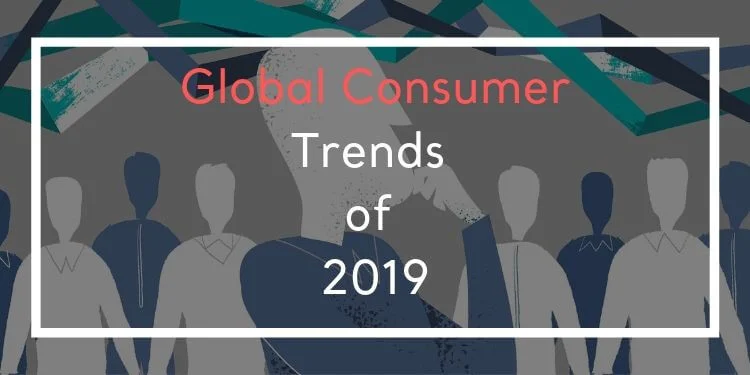Global Consumer Trends of 2019

A general development or change in a situation or in the way that people are behaving.
Trend currents are big-picture, unstoppable, inexorable forces that are shaping the world we live in. -Steve Woodruff
Introduction to Global Consumer
Brands need to keep up with the latest consumer trends to stay in the game. Trends not only dictate the characteristics of a successful marketing strategy of today but also understanding the clues they give about the near future helps companies to plan better.
So, let’s take a look at the top 5 global consumer trends of 2019, so you can have a better insight into your target audiences.
Consumers want authenticity for status

Consumers, especially in developed economies, are changing their spending habits from open materialism to simplicity, individuality, and authenticity. They abandon mass-produced goods, and they value unique, personalized, and differentiated products because it shows a level of status.
As a result, they are buying hyperlocal food, craft beer, handmade beverages, DIY beauty products, and so forth. This means that marketing strategies focusing on personal experience rather than the quality might work better nowadays.
Consumers care more about the world

People have become more and more aware of the harmful impact consumerism is having on the planet. They are more conscious and mindful with their purchases now. They care about environmental issues, animal welfare, anti-discrimination, LGBTQ+ rights, etc. and expect brands to take action about these subjects.
They also want eco-friendly and recyclable products, and they are willing to pay more on them. A lot of huge companies, including Apple and IKEA, realized this trend early enough and had marketing campaigns focusing on it. You should join the current as soon as possible too.
Consumers are ageless

Researches show that when it comes to values and priorities, Babby Boomers (individuals born between 1946 and 1964) have much more in common with the younger generations. They don't see themselves as old, and they don't like people saying otherwise. They want products and services that allow them to remain as young as possible physically and emotionally. 35% of Baby Boomers say that they just want to enjoy today and not worry about the future. Interestingly, this proportion is higher than Gen Z and very close to Millennials.
They do spend too. The 50-59 age group still has the highest spending power amongst all other groups. They earn an average of $17 thousand per year, a figure that is 28% higher than the average of all age groups. So, maybe it’s not very wise to exclude them when thinking about marketing strategies.
Consumers are more physically alone but digitally together

Loner living trend started with Baby Boomers, who once had the highest divorce ratio, and is still going on. For example, 60% of Millennials are either single or divorced. It’s estimated that the number of single-person households will increase by about 120 million by 2030. Researches show that loner living customers don’t care about durable, high quality, popular or natural products as much. Convenience and affordability are essential. They mostly are proud of this living choice, and they are willing to spend on products or services that help them celebrate and show their independence.
On the other hand, technology allowed digital togetherness. Globally, almost half of people share photos or videos weekly. This proportion was just over one-third in 2015. However, it’s no longer just about sharing photos, chatting, playing video games, making friends, or dating online. Industries like education, multimedia production, and even healthcare realized the trend and are moving more of their collaboration online.
Consumers are more efficiency-driven now

In today’s digital world, people getting more and more unhappy about the idea of waiting. Just like they hate to see the buffering icon on a video website, they hate waiting for the products and services they purchased. This is why younger generations use mobile banking apps when elders are still OK with a phone call or even going to the branch.
Saving time, and efficiency is crucial, especially for the 30-44 age group. Half of them say that they are willing to spend money to save time, while this figure is less than 30% for people older than 60. Additionally, researches show that women feel more pressure about time than men, so they are more likely to pay for time-saving products and services.
Stay Updated With Kimola Trends
Consumer trends now change faster than ever before, which makes it harder to keep track. Kimola can help you with that. “Trends” feature of Kimola’s Social Research Platform allows you to see what is trending for your target audience.
To know more about Kimola Trends and the ways you can benefit from it, you can always reach us via Contact Sales Page, or you can book a call via Calendly.







